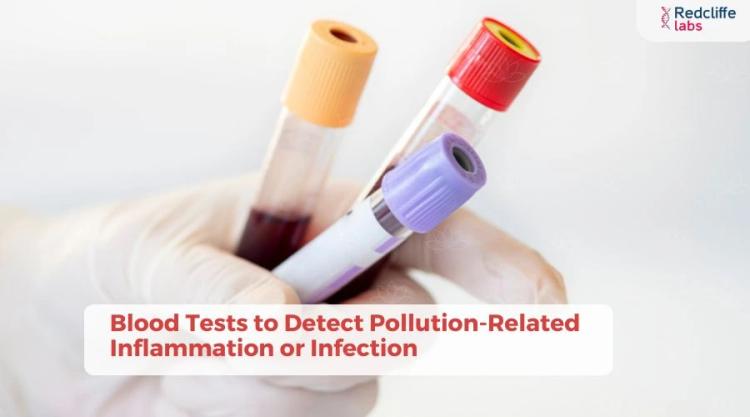Skin Cancer: causes, symptoms, tests, and treatment

Medically Reviewed By
Dr. Ragiinii Sharma
Written By Prekshi Garg
on May 17, 2022
Last Edit Made By Prekshi Garg
on Jan 9, 2025

Skin cancer refers to the uncontrolled growth of the skin cells. The cases of skin cells are rising in INdia, especially in the northern region. According to a study conducted by the ICMR’s National Institute of Cancer Prevention and Research, the prevalence of melanoma in north India is around 1.62 for males and 1.21 for females for every 1,00,000 people. The incidence of nonmelanoma skin cancer is around 5.14 for males and 3.98 for females for every 1,00,000 people in the northeast region. Therefore, with the increasing cases of skin cancer, it is essential for the masses to know about it. So, in this article, let's discuss the types of skin cancer, their symptoms, diagnosis, and treatment.
[wptb id=6981]
In this Article
What are the types of skin cancer?
The unorderly and uncontrolled growth and multiplication of the skin cells is known as skin cancer. D growth of cells occurs when cells divide without any damage or wear and tear of cells. The uncontrolled growth of cells can be benign, that is, non-cancerous (such cells don’t spread or cause any harm to the body) or cancerous (such cells spread to the nearby tissues if not treated on time). Depending upon the type of skin cell that has undergone uncontrolled growth, skin cancer can be of various types. According to the Cancer Treatment Centres of America, skin cancer can be of the following types:
Basal cell carcinoma
- Basal cell carcinoma is the most common form of skin cancer. According to the American Cancer Society, basal cell carcinoma accounts for around 80% of the cases out of 3 million cases that are diagnosed each year.
- This type of cancer develops in the lowest part of epidermis, that is, within the basal cell layer of the skin.
- It generally develops in areas that are over exposed to the sun like the head and neck.
- The growth of these cancers is slow and they rarely spread to the nearby tissues or metastasize to lymph nodes.
- Basal cell carcinoma is a recurrent form of cancer. Therefore, there are always chances of the cancer to appear back after treatment. In approximately 50% cases, the basal cell carcinoma emerges back within 5 years of treatment.
- The recurrent basal cell carcinoma may form in the same place where it was earlier formed or may emerge in a new place anywhere in your body.
- The recurrency of this form of cancer makes regular monitoring of the skin very crucial.
- People who have dry skin, history of eczema, exposure to high doses of UV light, had carcinoma that was present several layers deep in the skin or had carcinoma larger than 2 cm size are at a higher risk of getting recurrent skin carcinoma.
Squamous cell carcinoma
- The second most common type of skin cancer is squamous cell carcinoma.
- Around 20% of the non-melanoma skin cancers are squamous cell carcinoma.
- The cancer develops in the flat squamous cells that form the major portion of the outermost layer of the skin, that is, epidermis.
- This cancer also commonly occurs in the parts of the skin that are highly exposed to the sun, like the face, ears, neck, and the back of the hand.
- This form of cancer also grows slowly and rarely spreads or metastasizes. However, they have a greater chance to spread into the fatty tissues that are present beneath the skin.
Melanoma
- Melanoma cancer occurs in the melanocytes which are skin cells responsible for producing a brown pigment known as melanin.
- These cells act as a protective shield for the deeper layers of the skin protecting it from the harmful effects of the UV rays.
Merkel cell carcinoma
- Merkel cell carcinoma is rarely occurring skin cancer.
- It is aggressive cancer that affects the merkel cells which are responsible for the sense of touch of the skin along with the nerve endings.
- Cancer occurs more commonly in areas of the skin that are exposed to the sun, like the face or the scalp.
- Elderly people who have a compromised immune system are at a higher risk of developing merkel cell carcinoma.
- This cancer has the ability to metastasize to different body parts like the liver, brain, lungs, and bones.
Kaposi sarcoma (KS)
- This type of cancer is associated with the herpes virus and is caused by the human herpes virus 8.
- This cancer appears in the form of tumours or lesions on the skin.
- This cancer may also occur in parts like the lungs, mouth, or digestive tract.
- Apart from people with AIDS, kaposi sarcoma may occur in patients who have a compromised immune system.
What are the causes of skin cancer?
Skin cancer can develop due to various reasons. The main causes of skin cancer include:
- Overexposure to UV rays or sunlight (UV rays damage the DNA present in your skin while leading to the formation of abnormal cells).
- People who have sunburns or use tanning beds
- Frequent contact of skin with chemicals like coal and tar.
- People with freckles or fair skin, light-colored eyes, or red or blond hair
- People with irregular or multiple moles
- Have precancerous growth of skin (actinic keratosis)
- Have a family history of skin cancer
- People who have undergone an organ transplant
- People who are on medicines that weaken the immune system
- People who have got treatment for eczema or psoriasis with the use of ultraviolet light therapy.
What are the symptoms of skin cancer?
The early diagnosis of skin cancer is very important for timely treatment. The symptoms of skin cancer may vary depending upon the type of cancer. Therefore, if you observe any of the symptoms listed below make sure that you consult your doctor as soon as possible.
Symptoms of basal cell carcinoma
- Occurrence of bumps on skin that might be red, shiny pink, pearly, or translucent.
- Lesions or growths on the skin that is pink in colour and have raised borders and crusted centre
- A patch on skin that is red in colour and have a crust that is itchy and painful
- A scar like appearance on the skin which is white, yellow, or waxy in colour with a poorly defined border
- Open sores that bleed, cust, or ooze and do not heal easily
Symptoms of squamous cell carcinoma
- Persistent, scaly patches that are red in colour and have an irregular border. Such patches may bleed easily.
- Open sores that stay for more than a week
- Growth of cells on the skin which has a rough surface and is slightly raised in the middle
- Wart like growth on the genitals or nails
- Dome shaped or horn shaped growth on the skin
- Appearance of sores on any old scar
- Appearance of a black r brown colored line under the toe or finger nail
- Growth of sores inside your mouth
Symptoms of melanoma
- Tender, swelling or redness on skin
- Wounds that take a long time to heal
- Bleeding or oozing from a mole
- Blurry vision or appearance of dark spots in the eyes
How is skin cancer diagnosed?
The most effective method for the diagnosis of skin cancer is by visualising the changes on your skin. Therefore, if you see any wound that is not healing for a long time, or open sores or scars on your skin that are unusual, get a doctor's consultation for safety. The diagnostic methods used by the doctors include:
- Physical examination of your skin
- Skin biopsy, that is, an affected part of your skin is taken and tested in a laboratory for the presence of cancerous cells.
- Imaging tests can also be recommended by a doctor to know the stage of cancer and how much it has spread to the nearby area.
How is skin cancer treated?
Once the diagnosis of skin cancer is done, it is essential to start with the treatment of the cancer. The skin cancer treatment depends upon the type of cancer, the size, and the location of the cancerous cells.
Treatment of basal cell carcinoma
Following treatment options can be used for treating the basal cell carcinoma:
- Excising the cancerous cells and stitching back the remaining skin
- Curettage, that is scraping cancer cells, and electrodessication, that is, removing any cancerous cells that are left using electricity
- Mohs surgery (removal of mole layer by layer)
- Cryosurgery (freezing and killing the cancerous cells)
- Medicated skin creams
- Radiation therapy (use of X rays to kill cancer cells)
- Photodynamic therapy
Treatment of squamous cell carcinoma
The following methods can be used for the treatment of squamous cell carcinoma depending upon the size and location of cancer cells:
- Surgical methods include excision, curettage and electrodessication, and Mohs micrographic surgery
- Cryosurgery
- X rays radiation therapy
- Photodynamic therapy
- Topical medicated creams
- Removal of lymph nodes in severe cases
- Immunotherapy
- Targeted therapy
- Chemotherapy
Treatment of melanoma
The various options available for the treatment of melanoma include:
- Chemotherapy
- Surgical methods like excision, reconstructive surgery, and lymph nodes removal
- Immunotherapy
- Radiation therapy
- Targeted therapy
Takeaway
Skin cancer can normally occur if you tend to stay more in sunlight or if your skin is exposed more to the UV light. Skin cancer can be efficiently treated if it is diagnosed at an early stage. Now that you know the symptoms of different types of skin cancers, make sure that you consult your doctor, if you observe any of them on your skin. The diagnosis and treatment of skin cancer is effective. Thus, skin cancer can get treated, you just need to stay calm through this journey.
Frequently Asked Questions (FAQs)
-
Can skin cancer be cured?
Yes, if skin cancer is diagnosed at an early stage, it can be cured.
-
How long can a person live with skin cancer?
The survival rate after diagnosis of skin cancer is for 5 years or more in more than 80% of the people diagnosed with skin cancer.
-
Where does skin cancer start?
Skin cancer generally begins in the epidermis, that is, the outer layer of your skin.




